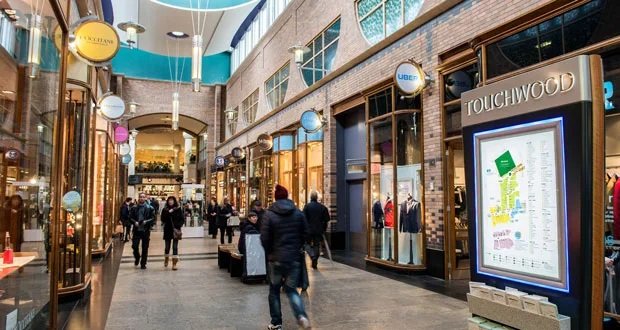Centre point
With the recovery now very much underway, there are encouraging signs that investors are prepared to once again enter the shopping centre market.
We take a look at who has been acquiring, what has been acquired, and what opportunities remain for investors in the UK.
Who, what, when, where?
The majority of transactions over the last 24 months have been local councils taking control of the major shopping centre assets within their town centres. With access to cheap sources of funding, the key consideration for many councils has been not if to invest, but when. Many are mindful of the need to invest and display proactivity and positivity to support town centre development and growth whilst not being caught out by purchasing at too high a price in a falling market. Just last week, Burnley Council were the latest council to take the plunge, purchasing the town's Charter Walk shopping centre for £20.7m.
In addition to council purchases, the number of private sector investments has begun to rise.
In early summer US investment fund Ardent purchased Touchwood Shopping Centre (seen above), Solihull from Lendlease Retail Partnership for an undisclosed sum. MD at Ardent UK, Andrew Hilston, identified the role that Solihull's catchment, demographic and competition played in informing the purchase:
“Touchwood’s exceptional location and strong tenant line-up were important factors in our decision to invest - underpinned by its emergence as the only John Lewis anchored centre in the region.”
In August 2021, The Blackburn-based Adhan Group purchased St George's Shopping Centre, Preston, for an undisclosed sum, citing the scheme's position and dominance in a city `undergoing a significant programme of re-development’. The new purchaser of Ballymena’s 280,000 sq. ft Fairhill Shopping Centre also noted the quality of catchment as a key driver in its decision to purchase the asset from Patrizia AG.
How to choose?
Clearly price, income and yield will play the determining factor in the majority of acquisitions, but looking at a location based on its catchment, demographic, dominance and user groups offers an additional way to review opportunity and identify locations to prioritise focus. Pragma has been carrying out a series of analysis for investors taking this approach, helping to identify the catchments that provide combination of scale, dominance and diversity of users that suggest potential for strong performance. Though several of the highlighted locations prove obvious, others are perhaps less so and may warrant further investigation by acquisitive investors. These include:
Bromley
Despite its proximity to Central London and Bluewater, Bromley's market size, affluent demographic and dominance of its local catchment has seen the town retain and continue to secure a good quality range of upper-middle UK and international brands. With Croydon’s plans for retail-led redevelopment in tatters, Bromley is likely to offer a significant opportunity to benefit from a localisation of spend, provided the town can continue to deliver the range of offer and experience expected by its user base.
Cambridge
International renowned for its university, the city will always attract a range of UK and international students and tourists. Increased collaboration between the institution and the private sector is seeing significant investment in the city, creating high-paid jobs and subsequent job-seekers to the area. The Cambridge International Technology Park scheme is the latest example of investment, providing facilities for life sciences and biotech firms across a 15 acre site. Commercial opportunities to serve this audience are huge, given the lack of immediate competition within the catchment.
Reading
Despite having suffered from the closures of both Debenhams and House of Fraser over the last 12-months, Reading's sizeable and affluent population still presents a significant opportunity for commercial sales performance. The £900m investment in the town's rail station has significantly improved provision for commuters and the (eventual) opening of Crossrail will further increase the potential for commuters to easily access Central London. This is likely to see further growth in Reading's already significant catchment population, which is additionally boosted by both a large student and worker population.
Andrew McVicker

